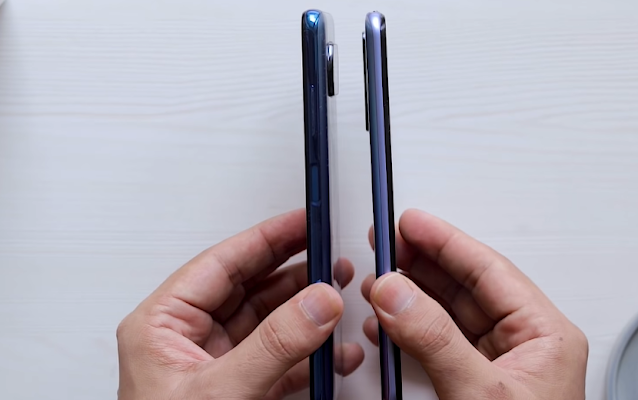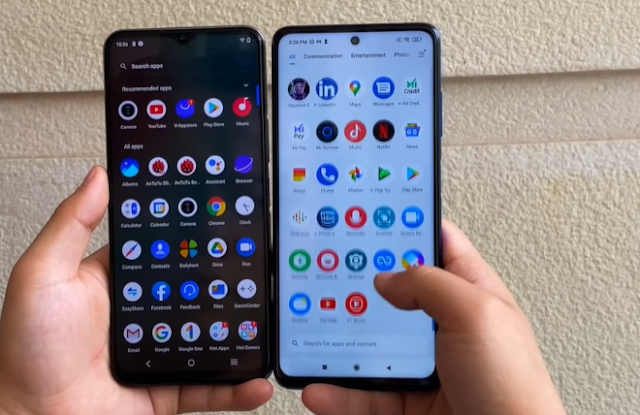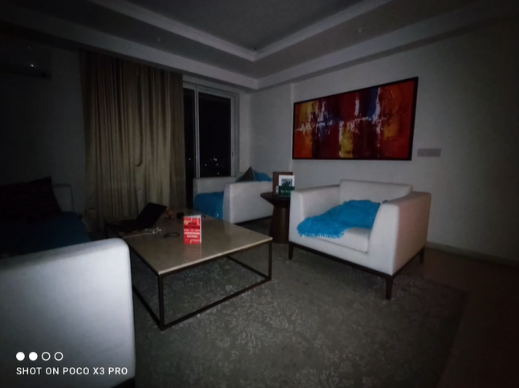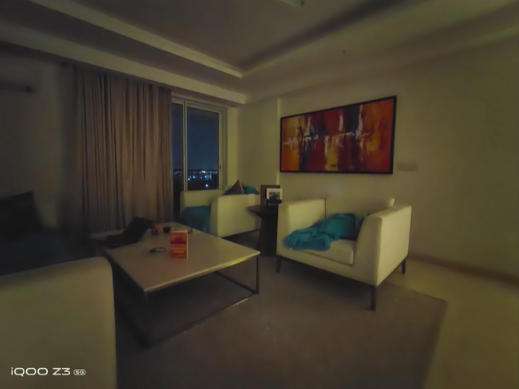Can the newer iQOO Z3 take on the powerful POCO X3 Pro?
iQOO, a sub-brand of Vivo came in 2020 with a very strong contender in the form of iQOO 3 and now this year we saw the iQOO 7 and the iQOO 7 Legend. These smartphones are aimed towards great performance while gaming being the topmost priority. Seeing the success of the iQOO 7 series, the iQOO Z3 was launched and this is a mid-range smartphone with all the bells and whistles.
The iQOO Z3 has a lot to offer and is the first smartphone to be powered by the Snapdragon 768G chipset in India. Since it is an iQOO smartphone, a lot of importance has been catered to gaming but when it comes to gaming, the best popular mid-range smartphone we have seen so far is the POCO X3 Pro. This smartphone from POCO has turned the tables and proved what a gaming smartphone truly is.
The POCO X3 Pro (Review) comes with a powerful Snapdragon 860 chipset, a larger battery, and much more. But it does miss out on 5G which the iQOO Z3 offers. So should you go for the newer iQOO Z3 with some good specifications and 5G or the POCO X3 Pro if gaming is what matters to you the most and do not care much about 5G? Let’s find out in the full comparison.
POCO X3 Pro vs iQOO Z3 Design:
Both the POCO X3 Pro and the iQOO Z3 come with a polycarbonate back instead of a glass back. The POCO X3 Pro has a dual-tone gradient finish where both sides have a matte finish and the middle part has a glossy finish, and this overall provides better grip when compared to the iQOO Z3. The camera module is circular which houses quad cameras with an LED flash.
There is a huge POCO branding that shines in different colors and the smartphone is available in two colors- Steel Blue and Graphite Black color variant. The iQOO Z3, on the other hand, has a glossy back that has a rainbow-like multicolor finish effect if you consider the Cyber Blue variant. There is another color variant i.e. Ace Black which has a black and grey gradient finish at the back.
The Cyber Blue variant is the most attractive as the rainbow effect is seen when the smartphone is seen at different angles. There is a rectangular camera module that houses the quad cameras with an LED flashlight and below there is the iQOO branding. The camera module is not protruded much like the POCO X3 Pro though.
The iQOO Z3 weighs around 185grams which makes it lighter compared to 215grams on the POCO X3 Pro and it does feel slightly heavier. But the POCO X3 Pro gets an IP53 rating making it water and dust resistant when compared to P2i coating on the iQOO Z3. Now moving to the sides, both have a plastic frame that holds the power button with volume buttons on both. Both do have support for a hybrid slot.
At the bottom, both have a USB Type-C port, a primary microphone, a loudspeaker grille, and a 3.5mm headphone jack. On the top, both have a secondary noise-canceling microphone and the POCO X3 Pro gets an IR Blaster additionally. Overall, the design and build are not so great on both but an IP53 rating, an additional IR Blaster, and the matte finish at the back give it a better grip.
POCO X3 Pro vs iQOO Z3 Display:
In terms of display, the POCO X3 Pro sports a slightly larger 6.67-inches display compared to a 6.58-inches one on the iQOO Z3. Both these displays are IPS LCD panels with Full HD+(1080×2400 pixels) resolution and have 120Hz refresh rates which makes multitasking, playing games, and scrolling through webpages smoother. The touch sampling rate is higher at 240Hz on the POCO X3 Pro.
In terms of brightness, the display panel on the POCO X3 Pro is slightly brighter compared to the iQOO Z3 and under direct sunlight, the iQOO Z3 display shows some niggles like whenever you turn on the highest brightness mode, the brightness falls down sharply and here the POCO X3 Pro provides better eligibility under direct sunlight.
Both these displays support HDR10+ and have Widevine L1, so streaming HD content from OTT platforms and Youtube is not an issue. In terms of protection, the POCO X3 Pro comes with Corning Gorilla Glass 6 which provides better protection compared to Panda glass protection on the iQOO Z3.
Both these have side-mounted fingerprint scanners on the power button and are equally fast.
Overall, both these displays are good but the better brightness level, better front glass protection, and also slightly larger display make the POCO X3 Pro better compared to the iQOO Z3.
POCO X3 Pro vs iQOO Z3 Performance:
The place where the POCO X3 Pro makes a statement is in terms of sheer performance and gaming. There is a powerful Snapdragon 860 chipset underneath which is an octa-core chipset that has a 1×2.96 GHz Kryo 485 Cortex-A76 core with another 3×2.42 GHz Kryo 485 Cortex-A76 core and another 4×1.8 GHz Kryo 485 Cortex-A55 cores and has the powerful Adreno 640 GPU.
The iQOO Z3, on the other hand, runs on the Snapdragon 768G chipset which is a much capable and powerful mid-range chipset that has 1×2.8 GHz Kryo 475 Cortex-A76 core with another 1×2.4 GHz Kryo 475 Cortex-A76 core and another 4×1.8 GHz Kryo 475 Cortex-A55 cores and is coupled with an Adreno 620 GPU.
In terms of daily performance, there is no difference between both smartphones as such. The POCO X3 Pro does feel slightly faster and there are no lags as such. With the iQOO Z3, there are some minor stutters noticed when used at a 120Hz refresh rate. The same goes for gaming, wherein the iQOO Z3 can run Call Of Duty Mobile at high frame rates and maximum graphics setting only.
Switching it to very high graphics results in drop to frame rates but this is not the case with the POCO X3 Pro as it can run Call Of Duty Mobile at the highest graphics and frame rates. Even other heavy demanding titles like Genshin Impact, Asphalt 9 Legend, etc. ran smoothly on the POCO X3 Pro and there were no stutters or frame drops noticed. The iQOO Z3 could also handle most of the games easily.
But at times, there were minor frame drops noticed. After a longer period of gaming, both smartphones did get warmer slightly but here the iQOO Z3 could maintain the thermals well compared to the POCO X3 Pro though both have a vapor cooling chamber underneath. In terms of benchmarks, the POCO X3 Pro scored 575649 in Antutu v8 compared to 443967 on the iQOO Z3. The iQOO Z3 supports 5G which the POCO X3 Pro lacks.
In terms of RAM and storage, the POCO X3 Pro ships with 6/8GB LPDDR4X RAM with 128GB storage with UFS 3.1 speeds which is slightly faster than UFS 2.1 speeds on the iQOO Z3 which ships with 6/8GB LPDDR4X RAM with 128/256 GB storage variants. So on an overall basis, the iQOO Z3 has good performance but the POCO X3 Pro holds the edge in terms of performance and gaming.
POCO X3 Pro vs iQOO Z3 Software:
The POCO X3 Pro runs on the MIUI 12.5 with Android 11 out of the box whereas the iQOO Z3 runs on FuntouchOS. In terms of user interfaces, both are very much closer to each other. Both come with a lot of bloatware but the iQOO Z3 has a lot more present and this makes FuntouchOS cumbersome to use. The POCO launcher looks much better on the POCO X3 Pro with all the organized applications.
But when it comes to looks, the FutouchOS looks more closer to Stock Android and offers a lot of features, and has more customizations. Well, both have a system-wide dark mode, Digital Wellbeing, Android 11 features, etc. There are very constant notifications on both smartphones but it is less on the POCO X3 Pro compared to the iQOO Z3.
In terms of software updates, the iQOO Z3 will get two years of Android updates and three years of security updates whereas on the POCO X3 Pro, it is not sure about Android and security updates. So the software is a personal preference, but for a person who wants more features and customizations, FuntouchOS is better and if you want a cleaner look, then the POCO X3 Pro is better.
POCO X3 Pro vs iQOO Z3 Cameras:
In terms of cameras, the POCO X3 Pro has a quad-camera setup that consists of a 48MP f/1.8 Sony IMX582 sensor for the main camera, an 8MP f/2.2 ultrawide camera, a 2MP depth, and a macro camera. The iQOO Z3, on the other hand, has a triple camera setup which consists of a 64MP f/1.8 Samsung GW3 sensor for the main camera, an 8MP f/2.2 ultrawide camera, and a 2MP macro camera.
On the front, the POCO X3 Pro has a 20MP f/2.2 camera whereas the iQOO Z3 gets a 16MP f/2.5 camera. The images from the main camera come out with better details on the POCO X3 Pro with a more natural look whereas the iQOO Z3 tends to oversharpen the background but you do get better dynamic range and lesser noise compared to the POCO X3 Pro.
(Credits: MySmartPrice)
(Credits: MySmartPrice)
At night, the images from the POCO X3 Pro have better details especially due to the great image processing of the Snapdragon 860 chipset and this results in better details and a more natural look compared to that of the iQOO Z3. The iQOO Z3, on the other hand, does some oversharpening and the dynamic range is better with lesser noise in the background.
(Credits: MySmartPrice)
(Credits: MySmartPrice)
With the Night Mode turned on, the iQOO Z3 takes sharper and clearer images with good dynamic range and the POCO X3 Pro is not far behind. There is less noise on the iQOO Z3 and also you do get some night filters. The details look more natural on the POCO X3 Pro and the highlights in shadows are well retained compared to the iQOO Z3.
(Credits: MySmartPrice)
(Credits: MySmartPrice)
The 8MP ultrawide camera does a good job in terms of dynamic range and details on both smartphones. The iQOO Z3 takes images with slightly sharper details though both have softer details and the colors look well saturated on both. The POCO X3 Pro, on the other hand, takes images with more noise and the colors look oversaturated. Both suffer from edge distortion though.
(Credits: MySmartPrice)
(Credits: MySmartPrice)
At night, the images from the iQOO Z3 come out with better colors whereas the POCO X3 Pro colors look dull but in terms of details both look softer and there is a lot of edge distortion around the corners. The ultrawide camera also gets a dedicated Night Mode and this does not change much as still there is noise on both and the details look softer.
Without Night Mode:
(Credits: MySmartPrice)
(Credits: MySmartPrice)
With Night Mode:
(Credits: MySmartPrice)
(Credits: MySmartPrice)
The macro camera is identical on both smartphones i.e. 2MP and the output is slightly better on the POCO X3 Pro with better color saturation whereas on the iQOO Z3, the colors look washed out and there is a lot of noise. In terms of portraits, the POCO X3 Pro has better edge detection and the background blur is perfect compared to the iQOO Z3 but the iQOO Z3 has better details and dynamic range.
In terms of selfies, the iQOO Z3 comes out with better details and dynamic range whereas POCO X3 Pro tends to oversharpen the selfies and has very high contrast. However, there is no skin smoothening on the POCO X3 Pro as on the iQOO Z3. The portrait selfies are better on the POCO X3 Pro with proper background blur but details and edge detection are better on the iQOO Z3.
The iQOO Z3 can record 4K videos at 60fps whereas the POCO X3 Pro can record 4K videos at 30fps only. At 4K 60fps, the iQOO Z3 has a lot of shakiness and the details are not as good as on the POCO X3 Pro. The POCO X3 Pro takes videos with good details and the dynamic range is not as good as on the iQOO Z3 but the videos have much better stabilization despite lacking OIS.
The same goes for the ultrawide camera where both the cameras are restricted to 1080p at 30fps and the video footage is better on the iQOO Z3 slightly but colors look better on the POCO X3 Pro. In terms of selfie videos, the POCO X3 Pro has better stabilization but details look sharper and better on the iQOO Z3. Portrait videos have better background blur on the POCO X3 Pro though.
POCO X3 Pro vs iQOO Z3 Battery Life:
The iQOO Z3 has a smaller battery at 4400mAh compared to the POCO X3 Pro which has a larger 5160mAh battery but the battery life is equally good on both smartphones. The battery on the POCO X3 Pro lasted slightly better than the iQOO Z3 and if you see with heavy usage, the iQOO Z3 lasted for a single day whereas the POCO X3 Pro lasted more than a day.
With normal usage, both smartphones lasted for two days and the display being set at standard 60Hz and the standard screen-on time was around 7 hours on the POCO X3 Pro which is higher compared to 5.5 hours on the iQOO Z3. Both have their respective power-saving modes to save battery also. But when it comes to charging, the iQOO Z3 takes the lead.
The iQOO Z3 comes with a bundled 55W fast charger inside the box compared to the 33W fast charger on the POCO X3 Pro. In terms of charging times, the iQOO Z3 is claimed to do 0 to 50 percent in 19 minutes but a full charge takes around 45-50 minutes which is quite faster than the POCO X3 Pro that takes around 75 minutes for a full charge from 0 to 100 percent.
Overall, when it comes to battery life, the POCO X3 Pro holds the edge but in terms of charging, the iQOO Z3 takes the lead.
POCO X3 Pro vs iQOO Z3 Audio Quality:
In terms of audio experience, the POCO X3 Pro holds the edge as it gets stereo speakers over the single speaker present on the iQOO Z3. The sound experience is much better and clearer on the POCO X3 Pro with better loudness levels and very little distortion compared to the iQOO Z3. Both do also get a 3.5mm headphone jack, but the sound output is much better on the POCO X3 Pro as it has Dolby Atmos.
Verdict:
Overall, both smartphones are the most valuable and powerful smartphones. The iQOO Z3 is the new entrant and makes a strong statement for itself like it has a 120Hz AMOLED display, a good and powerful Snapdragon 768G chipset, a 4400mAh battery with 55W faster charging, supports 5G, and comes with a capable triple camera setup that does a very good job in terms of images and videos.
But iQOO has done various compromises to keep the pricing right like there is no AMOLED display, the build is polycarbonate instead of glass, the design looks outdated with a dew-drop notch and the lack of stereo speakers is a big miss. The POCO X3 Pro, on the other hand, comes with a slightly larger display and also has a 120Hz refresh rate, but the build is still polycarbonate like the iQOO Z3.
However, the area where the POCO X3 Pro stands separate from the rest is in terms of sheer performance and gaming as there is a very powerful Snapdragon 860 chipset and this is the best gaming mid-range smartphones out there in the market. The cameras on the POCO X3 Pro are good but they are just average in images but do have natural colors and the videos are much better stabilized of the two.
Then there is the dual stereo speakers present for an immersive audio experience. The MIUI 12.5 is a good improvement over its previous versions but still there are some bloatware and constant notifications do pop in just like FuntouchOS on iQOO Z3. If you want a cleaner software experience, then the slightly higher priced
OnePlus Nord CE (Review) does a better job with its OxygenOS.
To conclude, if you want a smartphone with good looks, a good display, performance and gaming are not huge concerns, faster charging speeds with a good camera setup, then the iQOO Z3 is a perfect buy but if you want the sheer performance and gaming with good design, stereo speakers, great battery life and decent cameras, then the POCO X3 Pro is a better option and overall, it scores ahead of the iQOO Z3.



























